Plus-Size Mannequins Are More Than Just a Viral Moment—They’re the Future
The fight for plus-size representation in fashion continues to be a long and strenuous one—counting how many curves we see on the runway, keeping tabs of which designers go above a size 14, and asking what could be holding brands back. Still, in recent years we’ve seen more and more fashion companies taking a stand on this issue, both in their products and in the way they portray themselves to outsiders. You’ll notice curvy models in those companies' campaigns and their e-commerce and, in some cases, curvy mannequins in their stores.
A recent effort that hit the mainstream news cycle comes from Nike, which recently announced that it would be introducing plus-size mannequins in stores—first in London, then in the rest of the world. The goal, according to a statement released to CNN, is "to celebrate the diversity and inclusivity of sport,” as well as to show Nike’s plus-size offerings, which were launched in 2017.
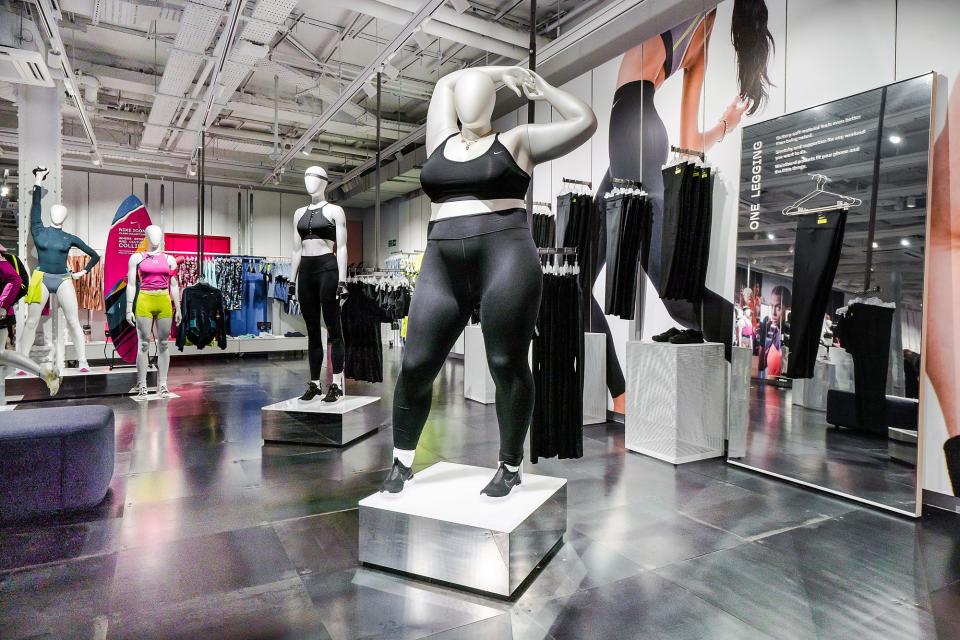
The decision to show different body shapes and sizes on the store floor is a monumental one, considering the lack of plus-size activewear available on the market. But it’s not unprecedented.
Nike joins Old Navy, Nordstrom, and Target in diversifying the sizes of their store mannequins. Even those at Rihanna’s first-ever U.S. Fenty pop-up have curves (though the brand caps out at a size 14). These brands realize the power of not just preaching body diversity, but showing it—and are taking action.
“All women do all things, and that’s what putting a mannequin in your store really should represent," Alison Partridge, vice president and general manager of plus and maternity at Old Navy, tells Glamour. "Whether you’re running a marathon, whether you’re a teacher, whether you’re at home with your children, you still have to get dressed every day.”
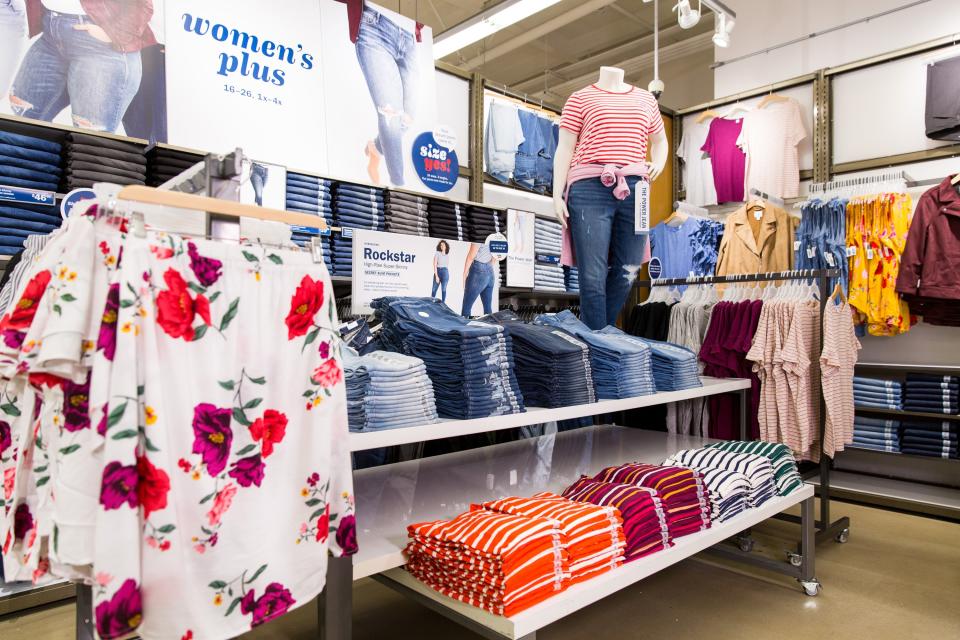
Old Navy has used curvy mannequins in its stores since 2018, when it reintroduced plus to its brick-and-mortar business. The impact has been nothing short of remarkable, according to Partridge: “It’s just one more step in making her feel included and a part of it, and like we’re proud to offer products for her.” She recalls an instance when one customer told her that seeing mannequins of varying body types in one of their stores made her feel proud to be her size. “It was this sign of inclusivity and it made her feel good,” Partridge says.
Target began implementing plus mannequins in stores around the same time. And it has certainly not gone unnoticed. “At Target, inclusivity is part of everything we do…. It’s so important that all guests feel a strong sense of belonging,” says Michelle Mesenburg, senior VP of marketing. “Guests have shared that they appreciate that our mannequins reflect a range of body types, and we’ll continue to listen to our guests to ensure we offer a shopping experience where all feel welcome and represented.”
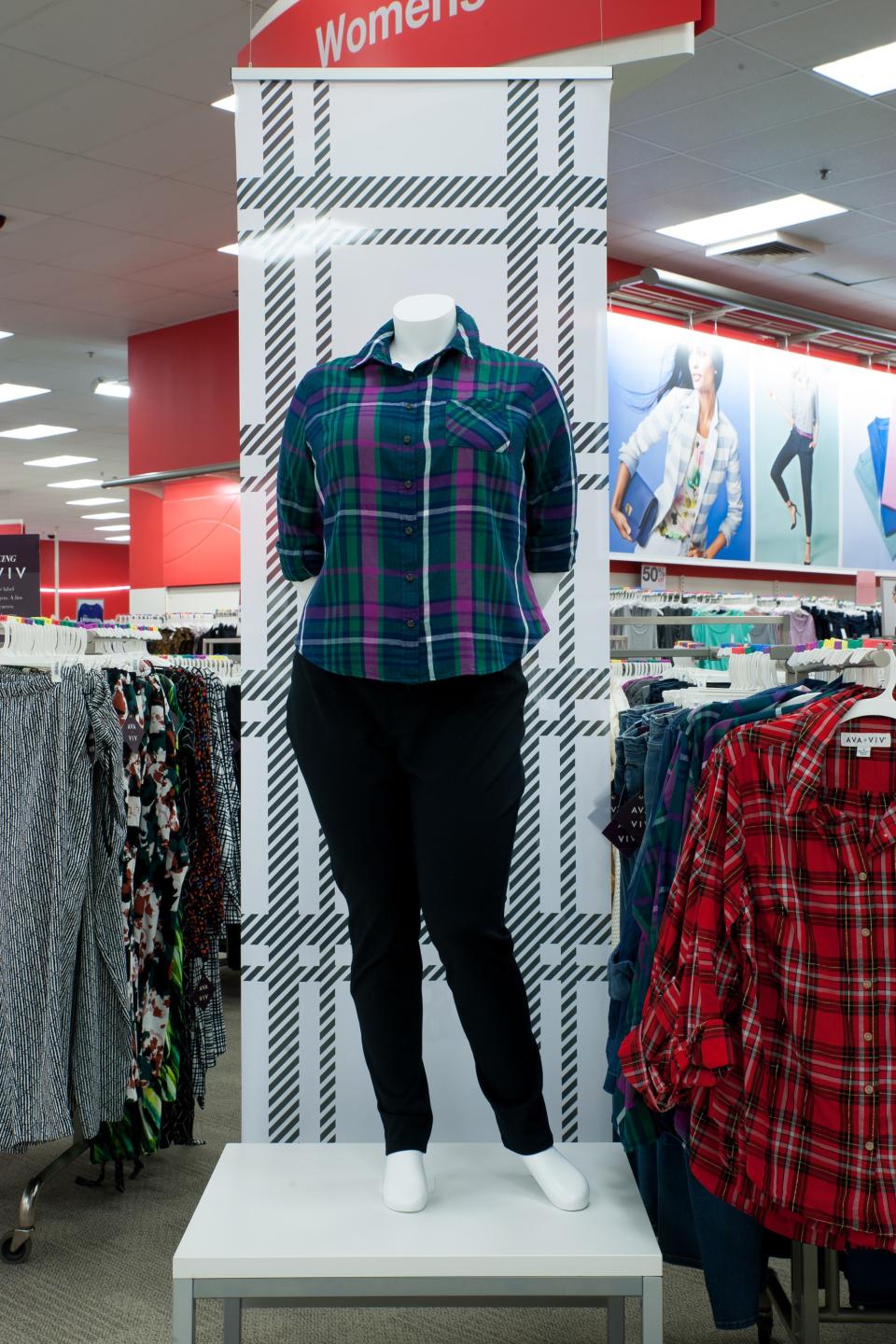
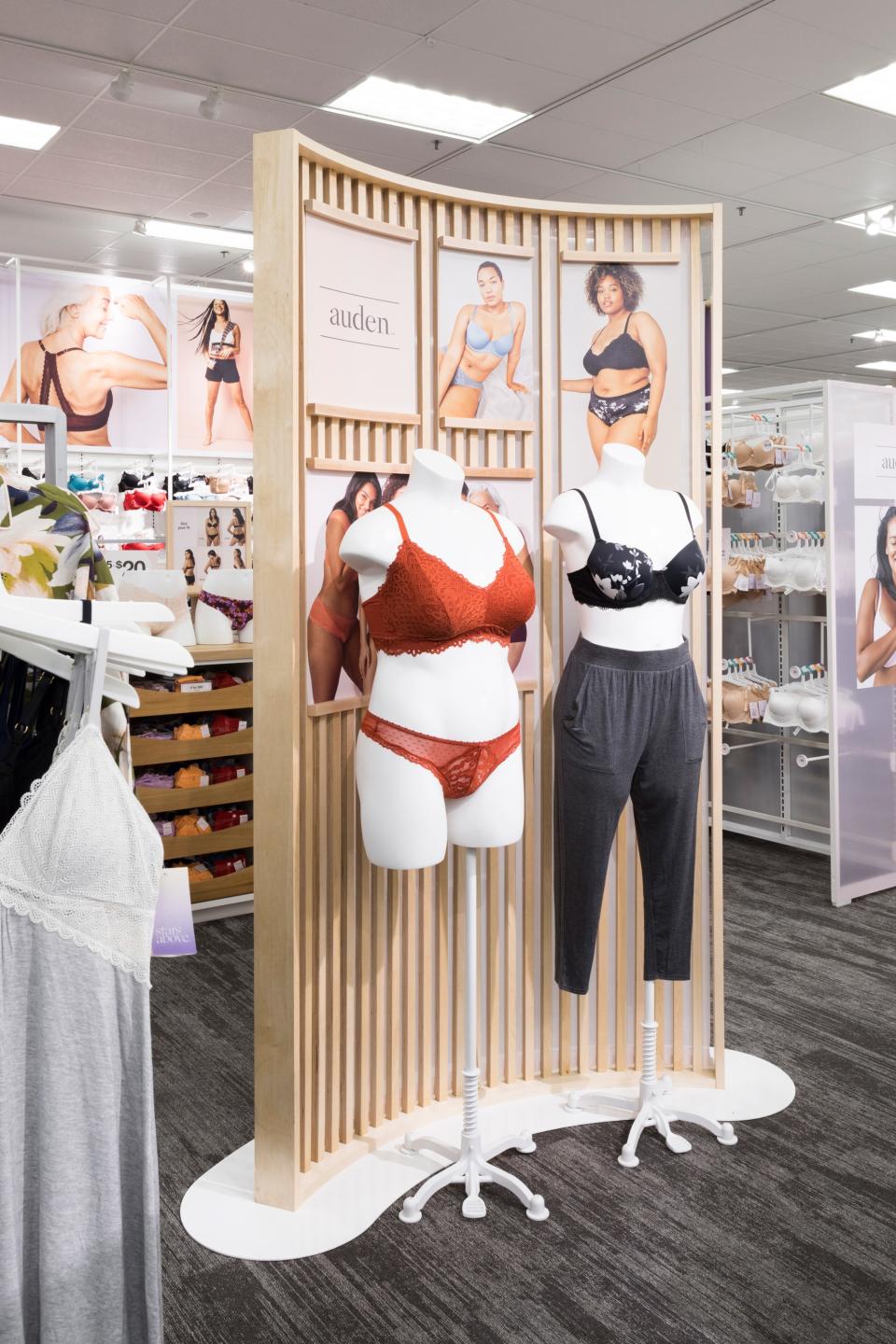
But why, exactly, does having a plus-size mannequin in your store have such an impact on shoppers? The reasons are plentiful—and oftentimes emotional.
For starters, seeing a mannequin in a window that looks like them lets a customer walking by know that, if they come in, they’ll likely be able to find something in their size. Instead of having to uncomfortably go up to a salesperson and ask if their size is even sold at that particular store—still a common experience for people who wear a size 14 or above, despite it being the average size of an American woman—they can often know right away what to expect.
“For a lot of people, it can be a frustrating, annoying, or embarrassing experience,” says plus-size fashion blogger Sarah Chiwaya. If she sees clothing on a plus mannequin, she’s more likely to stop and shop at that store or department. Of course, no singular mannequin can accurately represent the spectrum of plus sizes—each person carries their weight differently, so really, you’re just seeing a regularized version of the plus body—but as Chiwaya explains, a larger mannequin makes it much simpler for customers to envision how a garment will look on their body and whether or not it will compliment their figure.
The impact of seeing different bodies in a catalog, on an e-commerce product page, or on the store floor goes beyond simply letting shoppers know that they can shop there. It helps turn the conversation around body diversity and inclusivity, much of which happens online, into something tangible. It no longer feels abstract or unreachable for a fat woman or man to feel welcome in a store. Rather, it becomes the norm.
“It takes away the stigma ultimately of different-sized bodies,” says Amanda Scriver, a freelance journalist and body image advocate. “At the end of the day, that’s what matters. Fat visibility is important. Period. Full stop. We need to continue to fight for it, and having mannequins in-store helps provides others a realistic view of the different body types in this world, different body types just like mine.”
To place a plus mannequin on the store floor, front and center, is to proudly state that you stand for every single size you offer, that you believe that no matter the number on the shopper’s tag, they’re valuable and should have options to choose from. It signifies a mentality change from selling clothes by pushing an ideal to embracing who your customer is when they walk in.
“Although it’s just a mannequin, it gives us the opportunity to start having more body-positive conversations with teens and youth and start breaking the barriers on Western beauty standards for people who live in marginalized bodies,” says Scriver. “It’s a reminder to the rest of the world that we're here.”
And these efforts certainly draw attention. Why, then, aren’t more brands following in the footsteps of the Nikes and Old Navys of the world?
Steve Beckman, president and COO of Greneker, a mannequin manufacturer that often constructs plus-size figures, believes it’s because many are still too timid to take the leap. “It costs money to make this kind of change, so there’s a risk analysis that needs to be done. Retailers are slowly picking up the pace. We’re seeing our clients slowly come around to the notion that size inclusivity is something that is going to drive their growth going forward,” he says.
Greneker makes mannequins up to a size 22 and often advises brands to display mannequins of varying sizes in their windows to show a truthful representation of the clothing sizes offered. “We felt it was important to show a spectrum because typically on the plus-size side of things…they only showed one size in their window,” David Naranj, the company’s creative VP, says. “If you’re a size 22 or a size 30 or anything larger than a size 14, [it’s difficult] to really know what that garment is going to look like on you.”
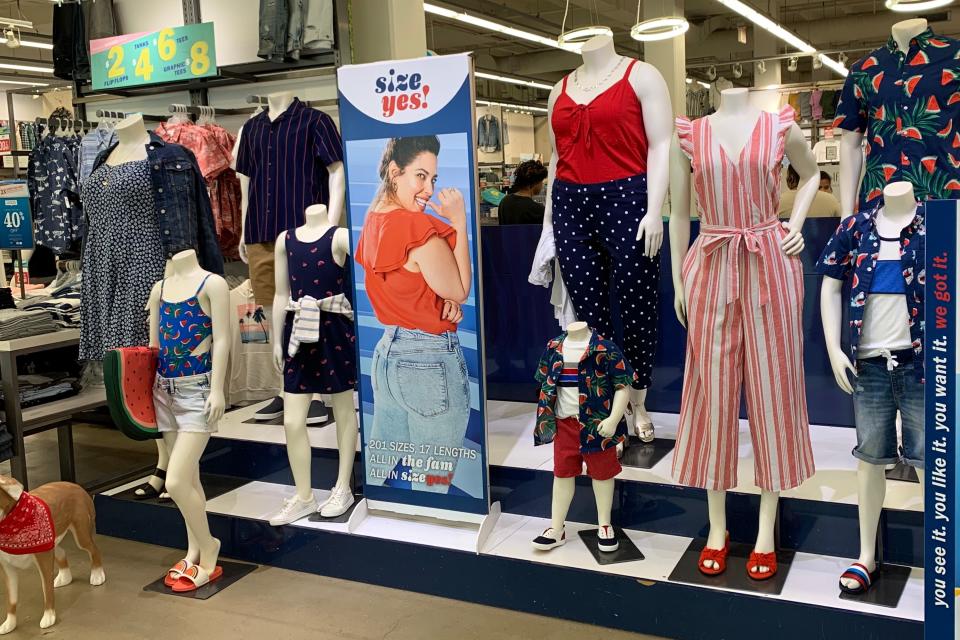
While Beckman and Naranjo do acknowledge that there’s a small cost bump involved in making larger-sized mannequins, there’s also a clear return on investment—which is what they continuously try to promote to their clientele.
Nike, Old Navy, and Target have gotten the memo. What about the rest?
“Brands need to have a long, hard think on their demographic and who they are selling their clothes to,” Scriver says. “So often I see brands introducing a plus-size line, but when I walk into the store or scroll through their online pages, there are no plus-size mannequins or models on-site to display or signal to me how the clothes would fit on my body. If you want to profit from my fat dollars, then you need to signal to me that you truly want to promote inclusivity and all shapes of all sizes.”
Originally Appeared on Glamour

